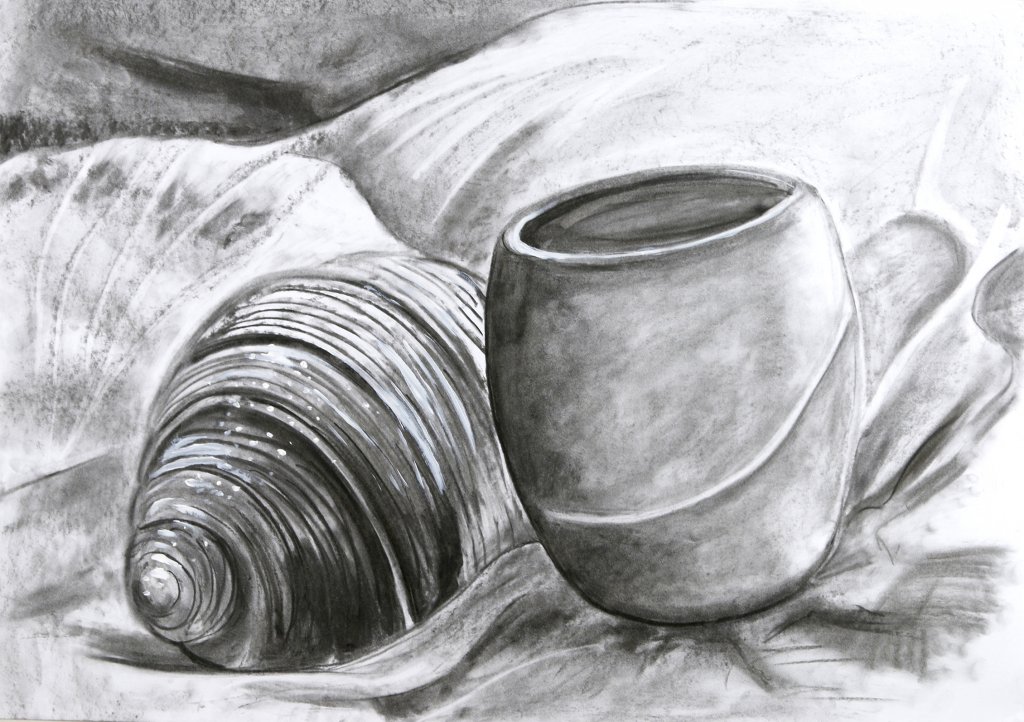This exercise called for 2 objects with reflective surfaces. I chose 2 decorative items, A glossy shell and small pot, they was both made of ceramics, both fairly light in colour an off white and a warm grey, the shell had more reflective qualities than the duller pot.
I really wanted to make the distinction between the two finishes, and the way the light would interact with each distinct surface.
the natural lighting was pretty soft, the room has flat white ceilings and walls, so a lot of the light falling on the objects had been bounced and diffused around the room, the ivory sheet was also serving as a reflector of sorts. There was another light source from above, several ceiling spot lights, I had them on throughout to keep some consistency to the lighting.
there is also a set of glass doors next to the objects this provided more focused light pouring in from the right side.
I very gently worked in my blocks of tonal value, I ended up exaggerating some of the values especially the shell, I really wanted the objects to pop, some added contrast seemed just the way to achieve this.
Once I was happy with my composition and values, I tried to cut back in some details with the putty rubber, this helped somewhat, but when it came to the specular highlights where the spot lights reflected off of the ceramic shells glossy exterior I opted to use some white acrylic paint, the paint has no problem sitting on top of the drawing medium and creates a hard bright mark, perfect to describe the hard bright light that is reflected from a high gloss surface.
I was pleased with the outcome, I certainly used some artistic license by boosting the mid and dark tones of the subject, I feel this was of benefit. portraying reflections is something I have always been drawn to, the way images are distorted around an objects shape is a tough thing to get right, I have seen many technical drawings and airbrushed artwork that portrays surfaces such as chrome faultlessly. This was a simple introduction to light and how its reflected, if I had a more complex reflective object I would have undoubtedly learn a great deal more, but this will do for now.

